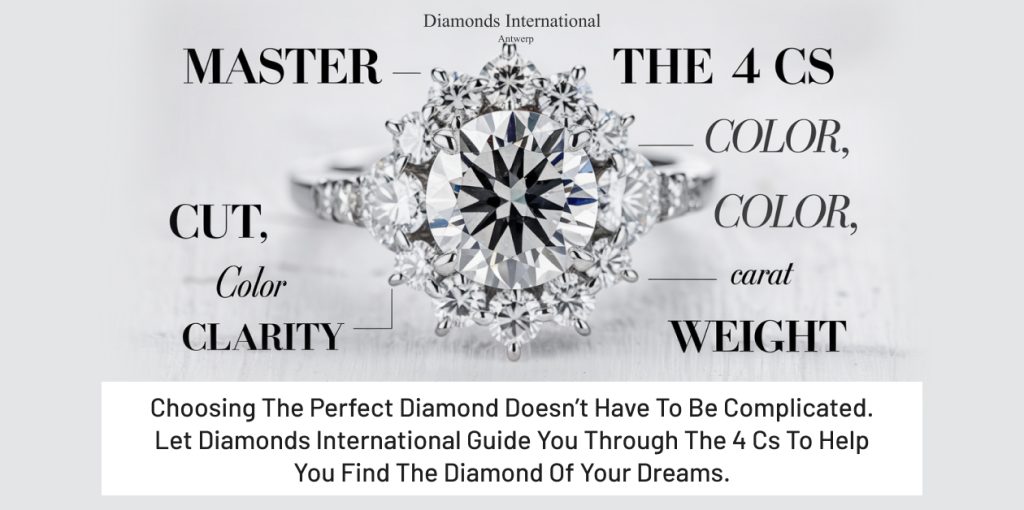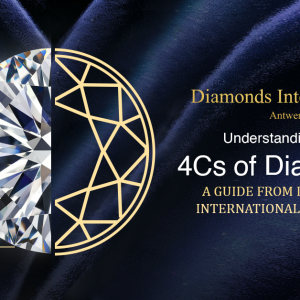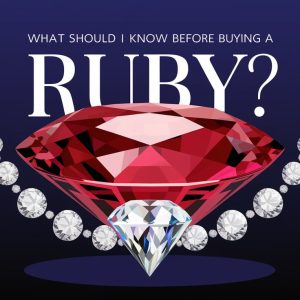When it comes to buying a diamond antwerp, the quality and value of the gemstone are primarily determined by four key characteristics: Carat, Cut, Clarity, and Color. These four factors, known as the Four Cs, have been the global standard for assessing diamonds for decades. This simple guide will help you understand each characteristic and how it affects the diamond you choose.
What Are the 4 Cs of Diamonds?
The Four Cs are fundamental to evaluating diamonds and are essential in making an informed decision when purchasing a diamond. Each “C” represents a different attribute that influences the overall quality and value of the diamond Antwerp.
- Cut – Determines the diamond’s brilliance and sparkle.
- Color – Assesses the diamond’s color, ranging from colorless to yellow or brown.
- Clarity – Measures the presence of imperfections (flaws) inside or on the surface of the diamond.
- Carat – Refers to the diamond’s weight, which is often associated with its size.
The Importance of 4 Cs in a Diamond?
Before the Four Cs, there was no standardized system for grading diamonds, which led to confusion and inconsistency in the diamond industry. Terms like “flawless” and “water” for clarity and color were subjective and meant different things to different people. In the 1940s, the Gemological Institute of America (GIA) introduced the 4 Cs, providing a clear, consistent method for grading diamonds.
This system made it easier for both buyers and sellers to evaluate diamonds objectively, ensuring fairness and transparency. The 4 Cs now provide a reliable way to compare diamonds and make an informed purchase.
A Brief History of the 4 Cs
The concept of the Four Cs was introduced by Robert M. Shipley, founder of the GIA, to simplify the teaching of diamond grading. This grading system, which includes the GIA International Diamond Grading System™, has since become the global standard. Over time, the system evolved, adding more detailed scales for Cut, Color, and Clarity to ensure consistent and precise evaluations.
Understanding Each of the 4 Cs.
Let’s take a closer look at each of the Four Cs:
1) Cut: The Most Important Factor
The cut of a diamond refers to how well it has been shaped and polished. It’s not about the diamond’s shape (e.g., round, princess, or oval), but rather the quality of the cut, which directly impacts how the diamond reflects light. A well-cut diamond will sparkle brilliantly, while a poorly cut one may look dull.
- Popular Cut Types:
The GIA evaluates the cut grade as Excellent, Very Good, Good, Fair, or Poor, with Ideal and Excellent being the top grades.
Pro Tip: For the most sparkle, prioritize a diamond with an Ideal or Excellent cut.
2) Color: How Colorless Is the Diamond?
Diamonds range from colorless to yellow or brown. The GIA Color Scale grades diamonds from D (colorless) to Z (light yellow or brown). The less color a diamond has, the higher its value.
- Color Grades:
- D (colorless)
- E and F (nearly colorless)
- G to J (near-colorless)
- K to Z (faint yellow to light yellow)
Colorless diamonds allow more light to pass through, making them appear more brilliant and valuable.
Pro Tip: Most diamonds in the D-H range look colorless to the naked eye, but the setting can affect how the diamond’s color is perceived.
3) Clarity: Free from Flaws
Clarity measures the internal and external flaws of a diamond, known as inclusions (inside) and blemishes (on the surface). The fewer and less visible the flaws, the higher the clarity grade.
- Clarity Grades:
- Flawless (FL) – No inclusions or blemishes visible under 10x magnification.
- Internally Flawless (IF) – No inclusions visible under 10x magnification.
- Very Very Slightly Included (VVS1, VVS2) – Inclusions are very difficult to see under magnification.
- Slightly Included (SI1, SI2) – Inclusions are visible under magnification but may not be noticeable to the naked eye.
- Included (I1, I2, I3) – Inclusions are visible without magnification.
Pro Tip: Opt for an SI1 or SI2 clarity grade for a diamond that looks flawless to the naked eye but is more affordable.
4) Carat: The Diamond’s Weight
The carat of a diamond refers to its weight, not its size. One carat equals 200 milligrams. Larger diamonds are rarer and more expensive. However, the size of a diamond can vary based on its cut.
- Carat Weight: A diamond’s size is proportional to its carat weight. Two diamonds of the same carat weight can look very different based on their cut.
Pro Tip: Consider slightly smaller diamonds (e.g., 0.90 carats) if you want to save money while still achieving a similar look to a 1-carat diamond.
The Fifth C: Conflict-Free Diamonds
In recent years, the fifth C—Conflict-Free—has become an important consideration for ethical diamond sourcing. Conflict-free diamonds are mined without funding armed conflicts or violating human rights. These diamonds are certified under the Kimberley Process Certification Scheme (KPCS), ensuring that they come from stable regions like Canada or Australia.
Choosing a conflict-free diamond ensures that your purchase supports ethical practices and the well-being of workers in the diamond industry.

How to Balance the 4 Cs
Finding the perfect diamond antwerp means balancing the Four Cs based on your preferences and budget. Here’s a breakdown of how to prioritize:
- Cut: Always prioritize the cut as it impacts the sparkle and beauty.
- Color: Choose a color grade that complements your setting (e.g., yellow gold can complement a slightly lower color grade).
- Clarity: Aim for eye-clean diamonds (e.g., VS2 or SI1) to save money without compromising appearance.
- Carat: Choose the carat weight based on your budget and the size you prefer.
Final Thoughts: Making the Right Choice
Understanding the 4 Cs is essential to choosing the right diamond for your needs. Always start with the cut for maximum brilliance, then consider color and clarity that suit your taste and budget. Finally, select a carat weight that aligns with your personal preferences.
By following these guidelines, you can confidently select a diamond that offers great value, beauty, and sparkle. Whether you’re buying an engagement ring or a piece of fine jewelry, knowing the 4 Cs helps ensure you get the best diamond antwerp for your investment.
For Expert Guidance, make use of resources like the GIA App or GIA Report Check to verify the diamond’s quality and make a well-informed decision.
Buying diamonds Antwerp is an exciting journey, and there’s so much to learn about them and the jewelry they’re used in. If you’re looking for expert guidance and tips on buying diamonds within your budget, Diamonds International can help. With 35 years of experience in the industry, their team offers reliable advice to make your purchase easier. Book an appointment with Diamonds International today to explore Antwerp Diamond Shop’s stunning diamond jewelry collection in Antwerp.
FAQs About the 4 Cs
1. What is the most important C to focus on?
The cut is the most critical factor as it directly affects the diamond’s brilliance.
2. Can I compromise on color or clarity?
Yes, especially if the diamond looks colorless and clean to the naked eye.
3. Are Conflict-Free Diamonds More Expensive?
No, conflict-free diamonds, including eco-friendly lab-grown options, are typically 30-50% cheaper than mined diamonds while promoting ethical practices.
4. How can I tell if a diamond is high-quality?
Check the grading certificate from a reputable source like GIA, which will provide an accurate description of the diamond’s 4 C’s.
5. Is a larger carat always better?
Not necessarily. A well-cut, smaller diamond often looks more brilliant than a larger, poorly cut diamond.
6. What should I consider when setting the diamond?
The setting can influence the appearance of the diamond’s color and clarity. For example, a yellow-gold setting can make a yellowish diamond look colorless.
7. Can I book an appointment to view diamonds and jewelry?
Yes, you can easily book an appointment with Diamonds International to explore our stunning Antwerp belgium diamonds collection. Our experts will guide you through the selection process and help you choose the perfect piece.
8. Do you offer a warranty on your jewelry?
Yes, Diamonds International offers a warranty on the stunning Antwerp diamonds fine jewelry to ensure your purchase stays in great condition. If you have any concerns or need maintenance, their team is ready to assist you.
9. How do Antwerp diamond shops help customers understand the 4Cs?
Diamond shops in Antwerp, Belgium like Diamonds International, educate customers about the 4Cs—Cut, Color, Clarity, and Carat Weight. They provide practical advice and demonstrations to help you choose the right diamond based on your preferences and budget.
10. What makes Diamonds International different from other jewelers?
Diamonds International, the Antwerp diamonds store, has over 35 years of experience in the industry, offering a wide range of high-quality diamonds and jewelry. Our focus on customer satisfaction, providing personalized service, certified diamonds, and a strong commitment to quality.



